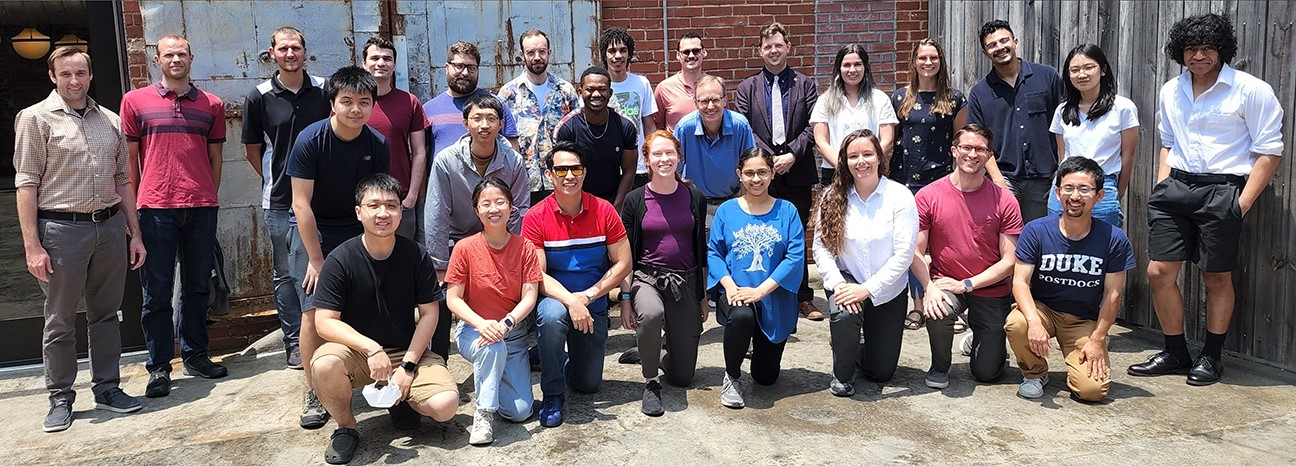Stephen Craig (MONET, Duke University)
I direct MONET — an NSF Center for Chemical Innovation built around the theme of Molecularly Optimized Networks.1 We are blessed in MONET with a diverse set of researchers who work on a rich set of challenges related to the chemistry of polymer networks. The team spans 15 research labs in ten institutions across the U.S. and Japan. As you would expect, each lab has its own expertise, and many use unique (both formal and informal) data-keeping and identification conventions. This amplifies a phenomenon that we’ve all experienced many times — data sharing almost always requires the active involvement of the individual who produced the data! Collaborative teams working in a dynamic discovery space don’t need that kind of viscosity. CRIPT is doing the hard work for me on two fronts: standardizing data entry in a robust and accessible way, and helping organize data for my team in a way that facilitates collaboration.

The line notations implemented in CRIPT hit the data challenges of collaborative work head on. Every polymer or polymer network has an unambiguous and unique identifier, which immediately standardizes practices across our team. In MONET, we have researchers making completely new compositions of polymers with fairly complicated molecular structures, and we have yet to find a composition that CRIPT can’t handle. What’s more, the BigSMILES line notation employed by CRIPT intrinsically addresses the stochastic nature of polymers and polymer networks.2 A polymer or polymer network often isn’t a specific molecular structure, but a probabilistic distribution of structures, the precise details are only known to some limited resolution. BigSMILES accounts for this, which we anticipate will, among other things, facilitate discovery and reduce the chance of miscommunication. The rules are straightforward and the fundamentals can be mastered quickly (in our experience 30-60 min for a new user) using available tutorials.3,4,5 And it’s easy to use — the line entry notation takes no more time (and sometimes less) than it does to draw the chemical structure using the software tools we often employ for that purpose. And unlike most structure drawing software, line notations can easily be entered from your phone!
Unambiguous indexing and identification is one challenge for collaborative research, but so are the logistics of data sharing. CRIPT, during the beta test, is helping MONET to organize our data and facilitate the collaboration within the team. We have set up our own project-specific spaces for data entry and archiving. Everyone can add data as it becomes available, and, more importantly, project collaborators can access that data in real time — no email exchanges necessary. The framework for adding characterization data is intuitive and makes entry, search, and sharing straightforward. Data on a given polymer network, but obtained by different labs, is immediately organized in an intuitive way that is findable and accessible by everyone working on the project. And once the work is published, we will be able to share our data more broadly with the push of a button — satisfying both a core value of the center as well as, increasingly, the expectations of publishers and funding agencies.
The CRIPT team has been fantastic throughout the beta testing phase. I appreciate the weekly updates on platform development, and responses to queries have been quick and complete. I like that the team really seems to enjoy hearing when we see an opportunity to tweak or add features, and how feedback from all of the beta test partners is being fed back into the platform and communicated to all participants.
- https://monet.duke.edu/ ↩
- Lin, Tzyy-Shyang, et al. “BigSMILES: a structurally-based line notation for describing macromolecules.” ACS central science 5.9 (2019): 1523-1531. DOI: 10.1021/acscentsci.9b00476. ↩
- https://olsenlabmit.github.io/BigSMILES/docs/line_notation.html ↩
- Beech, H. and Olsen, B. “BigSMILES tutorial” Slideshare. ↩
- Beech, H. and Olsen, B. “BigSMILES workbook” Slideshare. ↩
